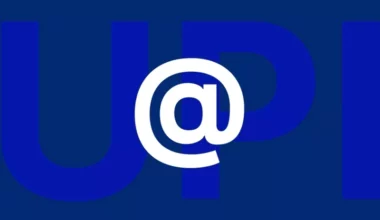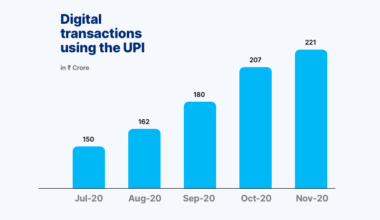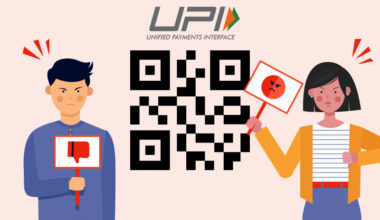With digital transactions becoming common, you must have come across different platforms facilitating online payments. BHIM (Bharat Interface for Money) and UPI (Unified Payments Interface) are commonly used online payment modes. People often confuse between BHIM and UPI, using them interchangeably.
Our expert guide will give you an in-depth understanding of the difference between BHIM and UPI. Read this blog to learn about what is BHIM and UPI, illustrating what makes them unique and different.
Understanding BHIM
The National Payments Corporation of India (NPCI) has crafted an innovative solution, BHIM, that allows people to make payments digitally. It was launched as part of the government’s efforts to promote cashless transactions and facilitate the nationwide adoption of digital payments. BHIM is based on the UPI platform and provides a simplified user interface to conduct secure and convenient transactions.
Key Features of BHIM
Some key features of the BHIM app are:
- User-friendly interface: BHIM offers a user-friendly interface that ensures seamless navigation and ease of use, even for individuals new to digital payment systems.
- Wide range of language support: BHIM supports multiple languages, making it accessible to a diverse user base across India.
- Availability across multiple platforms: BHIM is available on Android and iOS platforms, ensuring compatibility with a wide range of smartphones.
- Simplified transaction process: BHIM simplifies the transaction process by enabling users to make payments using mobile numbers, UPI IDs, and QR codes.
Advantages of BHIM
A few of the benefits of using the BHIM app are:
- Security and reliability: BHIM adheres to the strict security standards mandated by the NPCI, ensuring the safety of users’ personal and financial information.
- Real-time transactions: BHIM enables users to perform real-time transactions, allowing instant bank account transfers.
- Wide acceptance: BHIM is widely accepted by merchants and service providers across various sectors, making it a convenient payment option for users.
Understanding UPI
UPI is an advanced payment system that enables seamless fund transfers between different bank accounts. Developed by the NPCI, UPI has revolutionised how individuals, businesses, and organisations transact digitally. With UPI, users can link multiple bank accounts to a single mobile application and manage their finances efficiently.
Key Features of UPI
Listed below are the significant aspects of using UPI:
- User-friendly interface: With its intuitive design and seamless navigation, UPI has gained widespread popularity among users for its ease of usage.
- Bank-agnostic approach: One of the critical advantages of UPI is its bank-agnostic approach. Users can link multiple bank accounts to a single UPI ID, eliminating the need to juggle between multiple payment apps or remember various account details. This simplification has significantly enhanced the convenience of digital transactions.
- 24/7 availability: UPI operates round the clock, enabling users to transact anytime, anywhere, outside traditional banking hours.
- Multiple transaction options: UPI provides various transaction options, such as person-to-person payments, bill payments, merchant payments, and more.
Advantages of UPI
Following are some advantages you must know to understand the relevance of UPI payments:
- Simplified fund management: UPI simplifies fund management by allowing users to link multiple bank accounts to a single UPI ID and conveniently switch between accounts.
- Instant payment notifications: UPI sends instant payment notifications to users, providing transparency and ensuring that users get real-time transaction updates.
Key Differences between BHIM and UPI
This section will highlight the major differences between BHIM and UPI to help you better understand their distinctive features and functionalities.
- Development and purpose: BHIM was explicitly developed as a standalone payment app, whereas UPI is the underlying platform that powers BHIM and several other UPI-enabled apps.
- User interface and experience: BHIM provides a simplified user interface with an intuitive design, making it easy for users to navigate and initiate transactions. On the other hand, UPI caters to a broader range of apps and their respective, unique user interfaces.
- Supported transactions: While both BHIM and UPI facilitate various types of transactions, BHIM offers a streamlined approach primarily focused on person-to-person payments, whereas UPI encompasses a broader array of transaction options, including bill payments and merchant transactions.
- Language support: BHIM supports multiple languages, making it accessible to users across India. UPI-enabled apps may offer a different level of language support, depending on the individual app’s implementation.
- Transaction Limit: BHIM and UPI have a per-transaction limit of up to Rs. 1 lakh for individual transactions. Additionally, there is a maximum limit of Rs. 1 lakh per day for a single bank account linked to BHIM. And for UPI, a maximum limit of Rs 5 lakh is applicable for bill payments and merchant transactions.
- Branding and availability: BHIM is branded as a standalone app, whereas UPI functions as the underlying infrastructure for various apps from different service providers.
BHIM and UPI are crucial in enabling digital payments and transforming how individuals transact in India. While BHIM offers a simplified and user-friendly experience focusing on person-to-person payments, UPI provides a more comprehensive platform that caters to diverse transaction needs. As we shift towards a cashless economy, it is important to understand digital payment platforms and terms.








